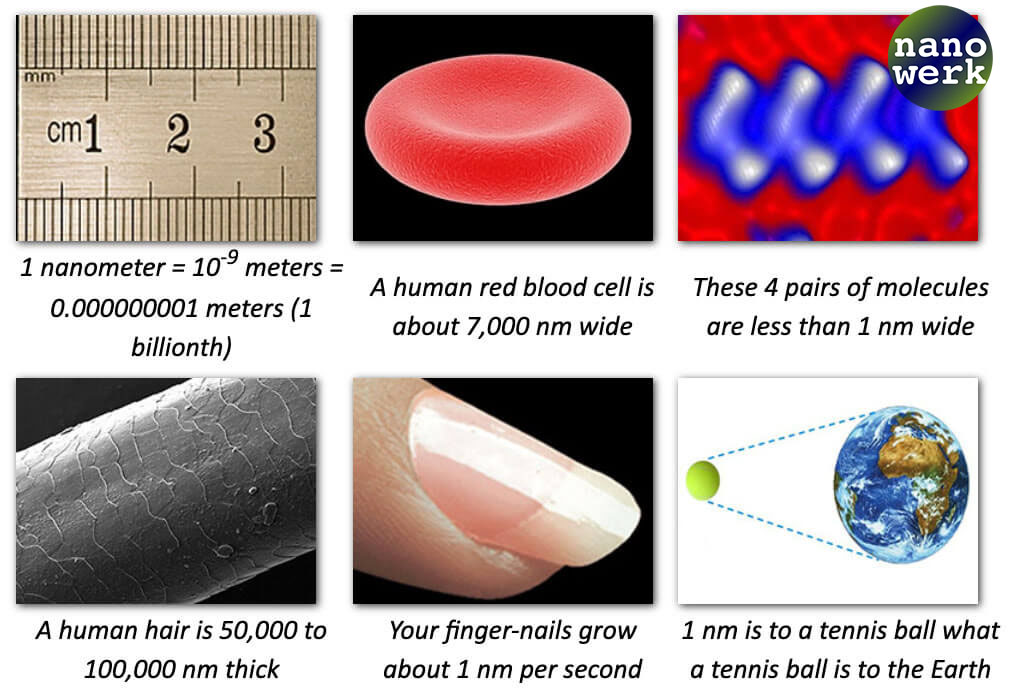Exploring the Nanometer in Science and Technology
Definition: A nanometer is a unit of length in the metric system, equal to one billionth of a meter, used to measure dimensions on an atomic and molecular scale.
Definition and Principle of Operation
A nanometer (nm) is a unit of length in the metric system, defined as one billionth (10-9) of a meter (m). The meter is the base unit of length in the International System of Units (SI), making the nanometer a derived unit used primarily to measure the atomic and molecular scale of materials and the wavelength of electromagnetic radiation.

Specific Examples to Illustrate the Nanometer
- Semiconductor Devices: The manufacturing of semiconductors, such as transistors in integrated circuits, utilizes nanometer-scale processes, with current technologies operating at nodes as small as 5 nm.
- Nanoparticles: Particles with dimensions measured in nanometers, such as quantum dots and carbon nanotubes, exhibit unique chemical and physical properties due to their size.
- DNA: The width of a DNA double helix is approximately 2 nm, showcasing the relevance of nanometers in biotechnology and genetic research.
- Optical Wavelengths: Visible light has wavelengths in the range of 400 to 700 nm, making the nanometer a key unit in the study of optics and photonics.
Importance and Applications
Understanding and manipulating materials at the nanometer scale has revolutionized industries and research fields, enabling advancements in:
- Electronics and Computing: Development of faster, more efficient semiconductor devices.
- Nanomedicine: Creation of targeted drug delivery systems capable of navigating the human body at the cellular level.
- Materials Science: Design of materials with novel properties for use in energy, coatings, and structural applications.
- Photonics and Optics: Development of new optical devices, including sensors and lasers, that operate at nanometer precision.
Units of Length in the SI System
The SI system categorizes units of length to accommodate measurements from the astronomical to the quantum scale, promoting precise and clear communication in science and engineering.
| Unit | Number of Meters | Standard Form |
|---|---|---|
| Kilometer (km) | 1,000 meters | 10^3 m |
| Meter (m) | 1 meter | 10^0 m |
| Centimeter (cm) | 0.01 meters | 10^-2 m |
| Millimeter (mm) | 0.001 meters | 10^-3 m |
| Micrometer (µm) | 0.000001 meters | 10^-6 m |
| Nanometer (nm) | 0.000000001 meters | 10^-9 m |
| Picometer (pm) | 0.000000000001 meters | 10^-12 m |
| Femtometer (fm) | 0.000000000000001 meters | 10^-15 m |
| Attometer (am) | 0.000000000000000001 meters | 10^-18 m |
| Zeptometer (zm) | 0.000000000000000000001 meters | 10^-21 m |
| Yoctometer (ym) | 0.000000000000000000000001 meters | 10^-24 m |
Understanding the Scale
The nanometer is integral to the metric system's method of using prefixes to represent various scales of measurement, facilitating the expression and understanding of very small dimensions in science and technology.
Historical Context and Etymology
The term "nano" comes from the Greek word νάνος (nanos), meaning "dwarf", reflecting the extremely small dimensions that this unit represents. Its adoption into scientific terminology underscores the significant progress in the ability to observe, measure, and manipulate matter at the atomic and molecular level.
